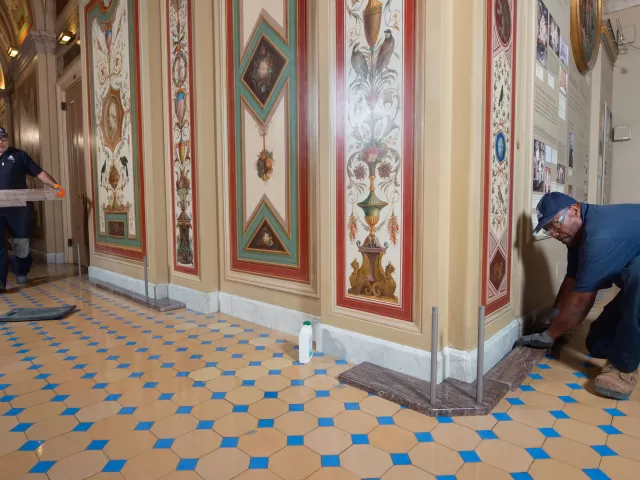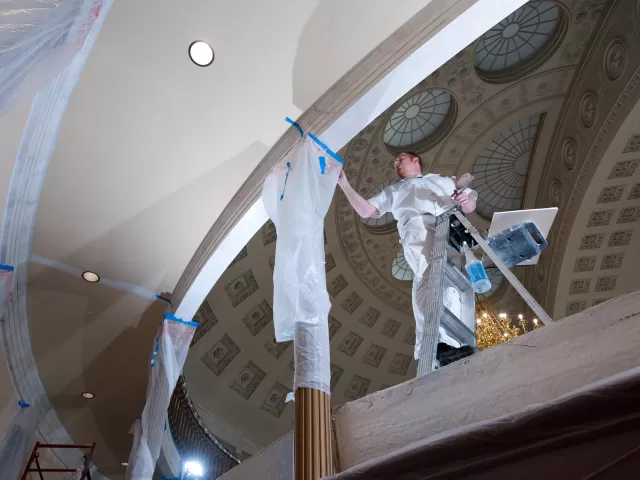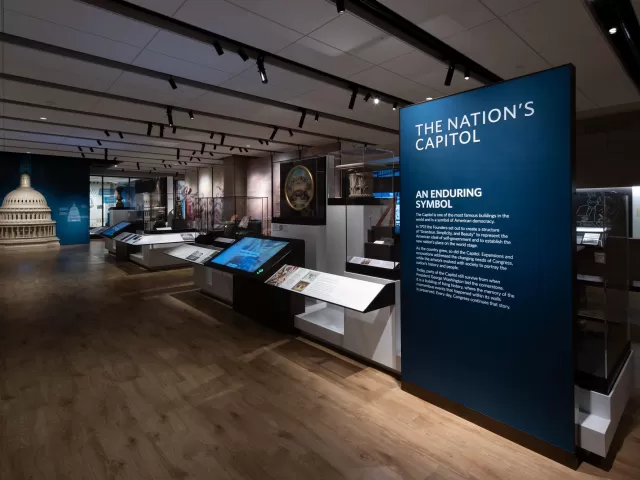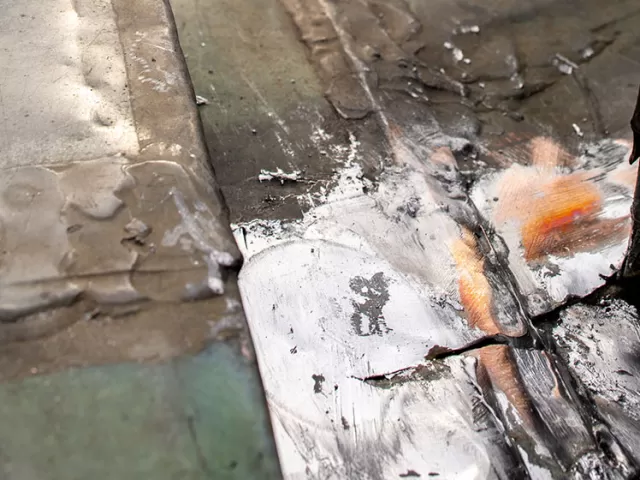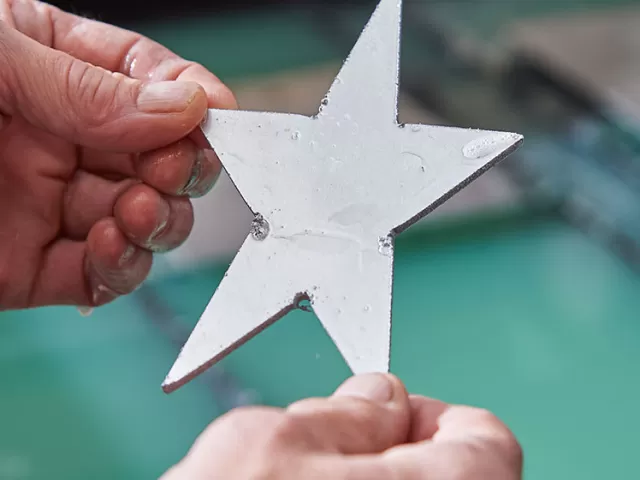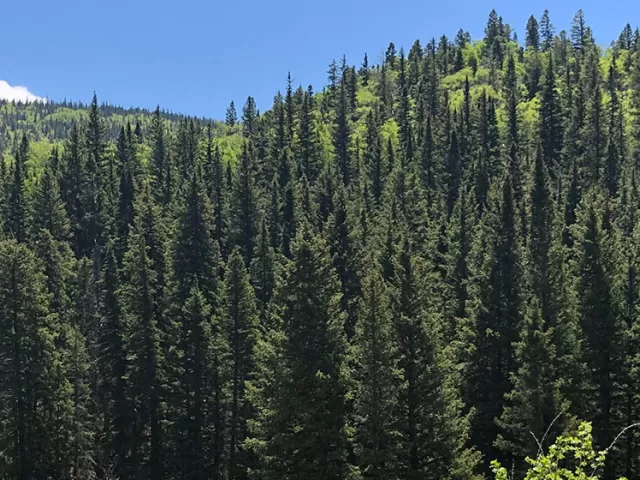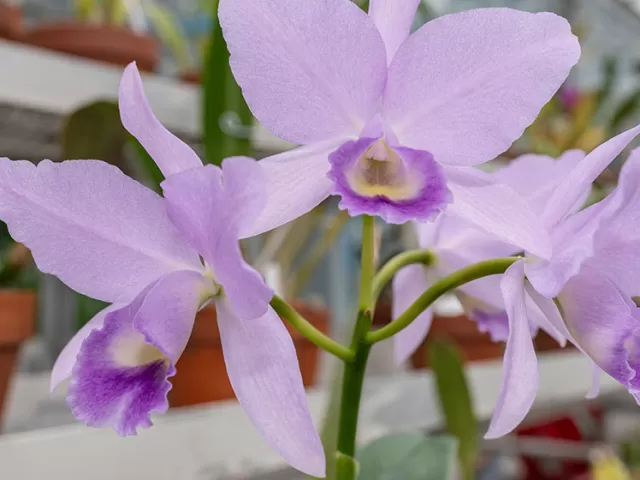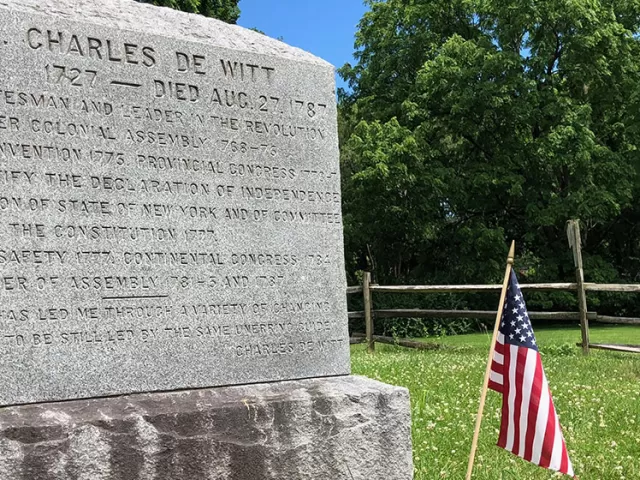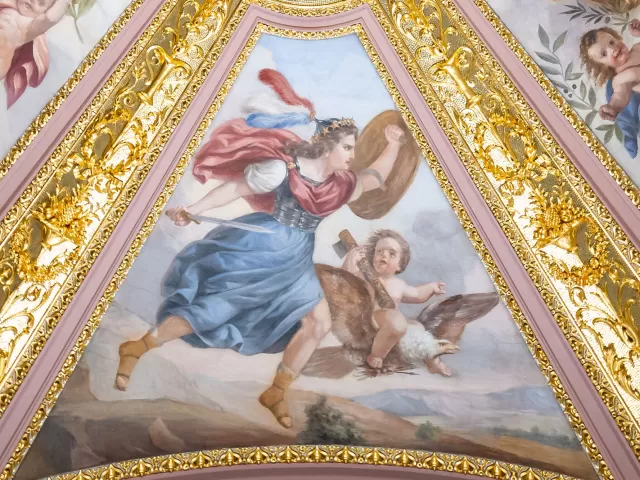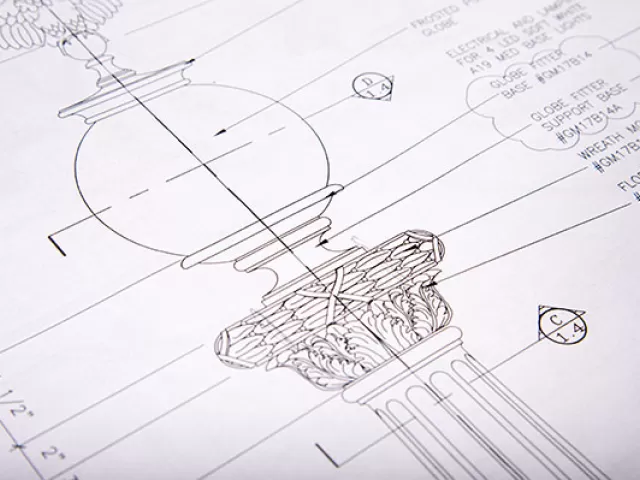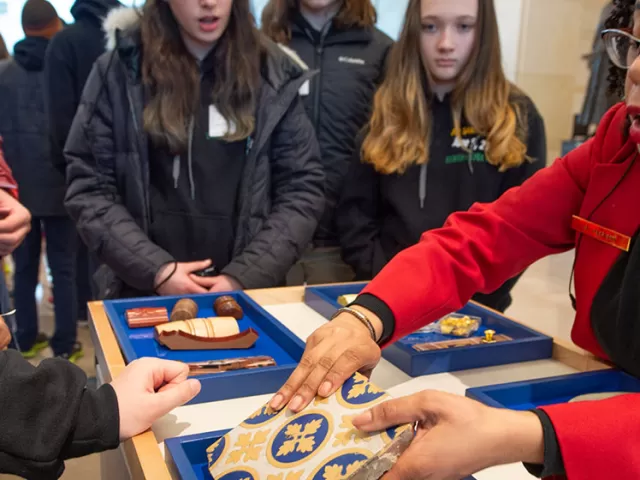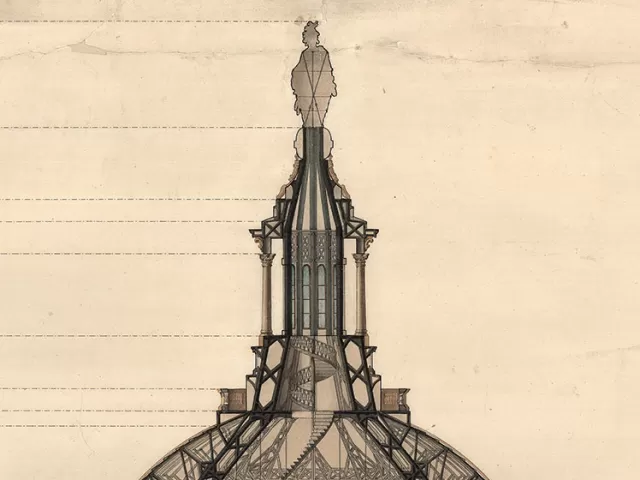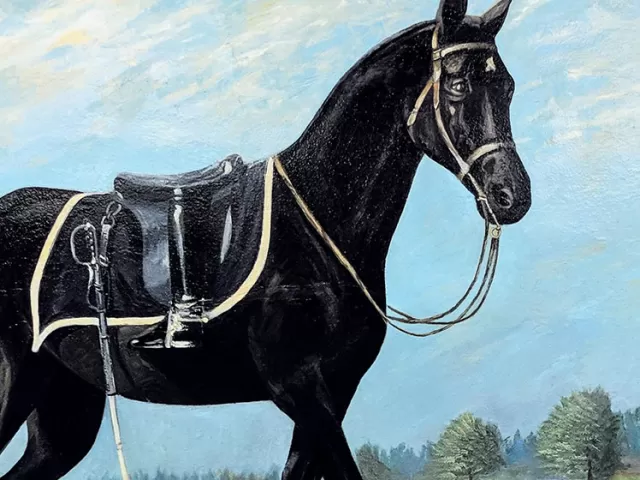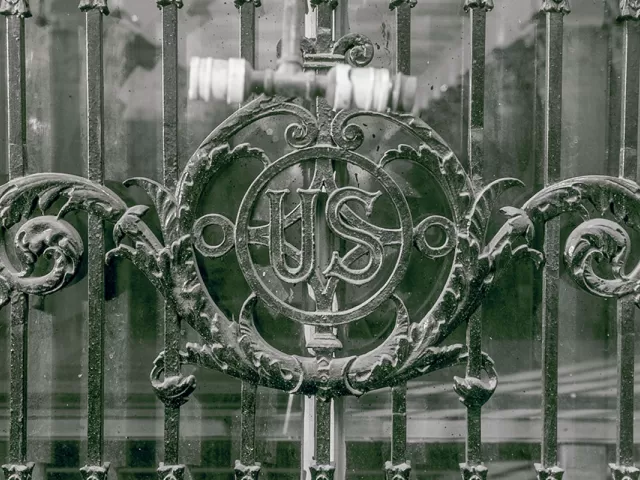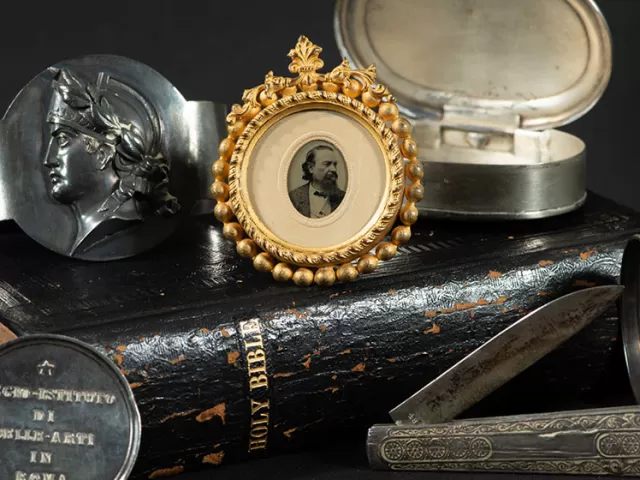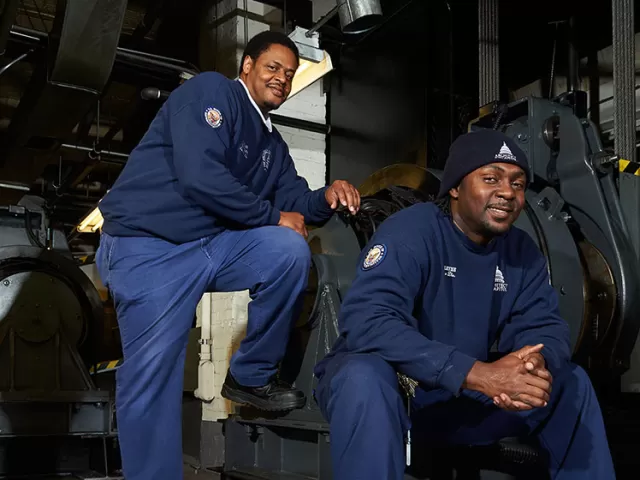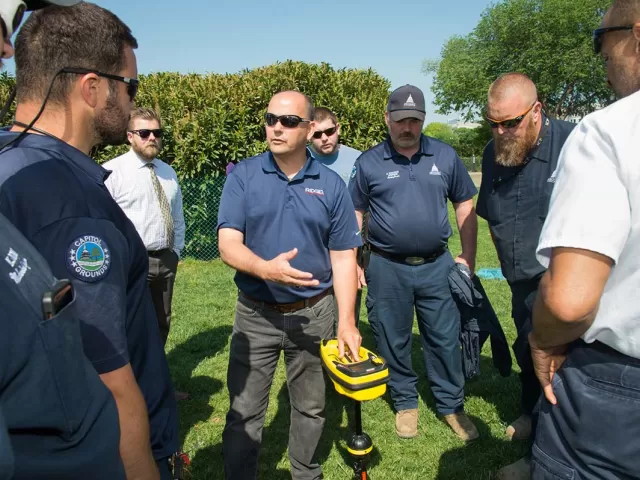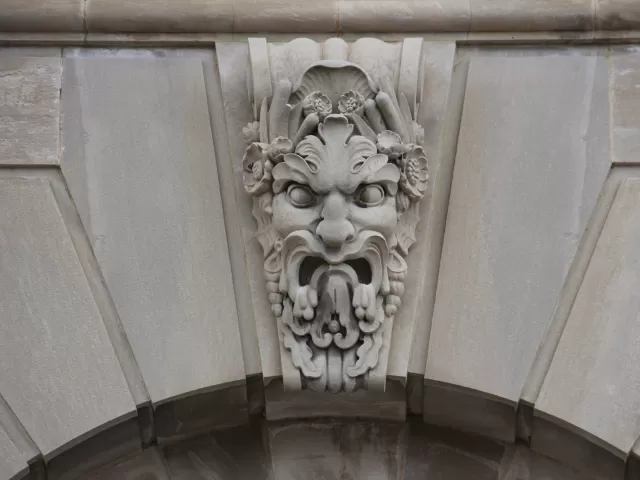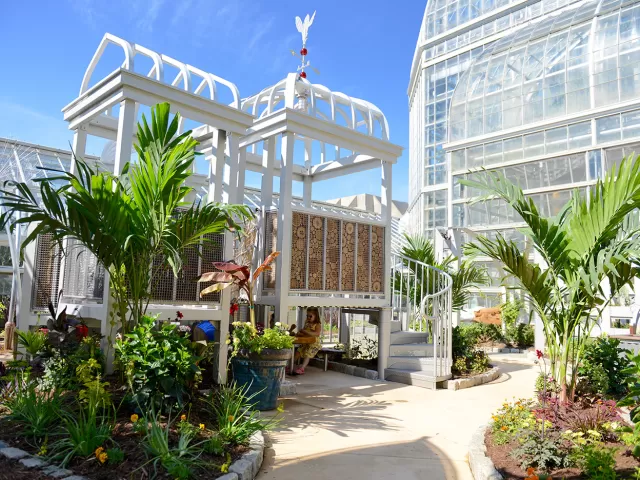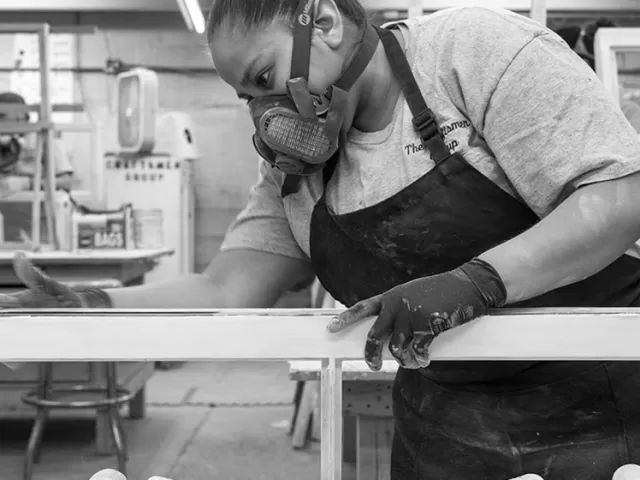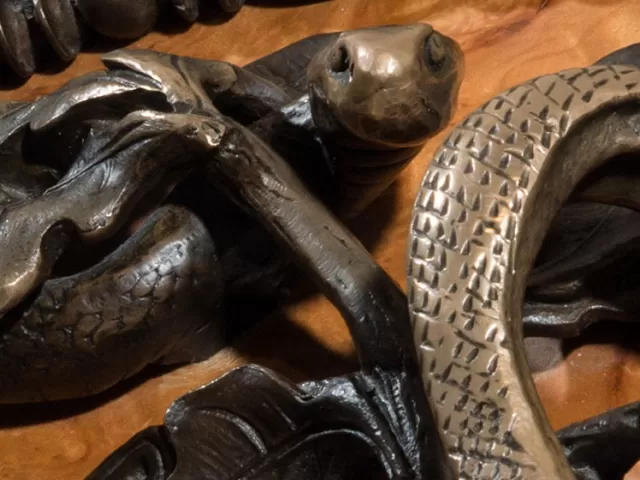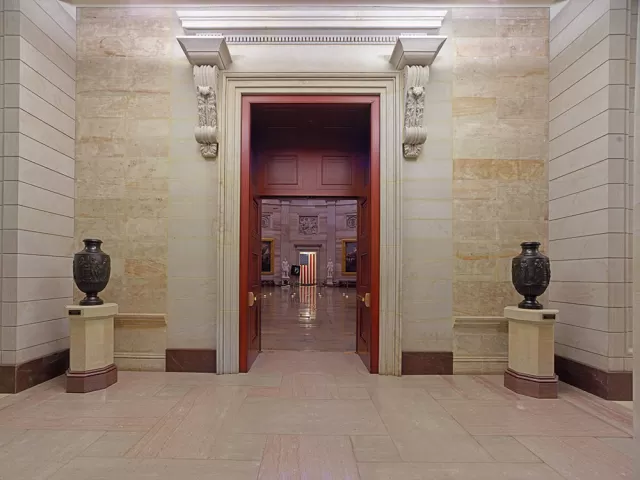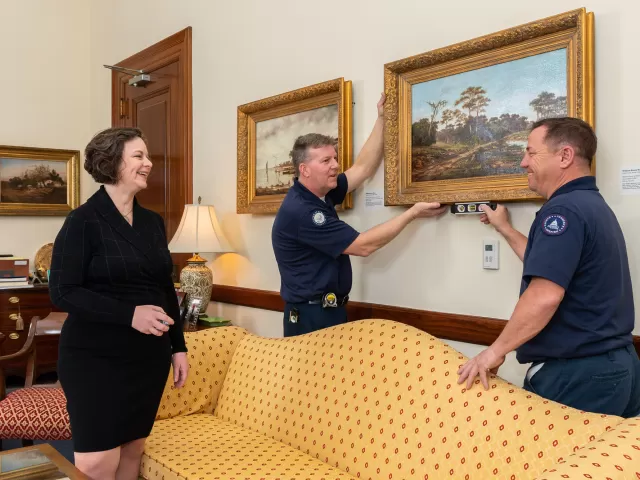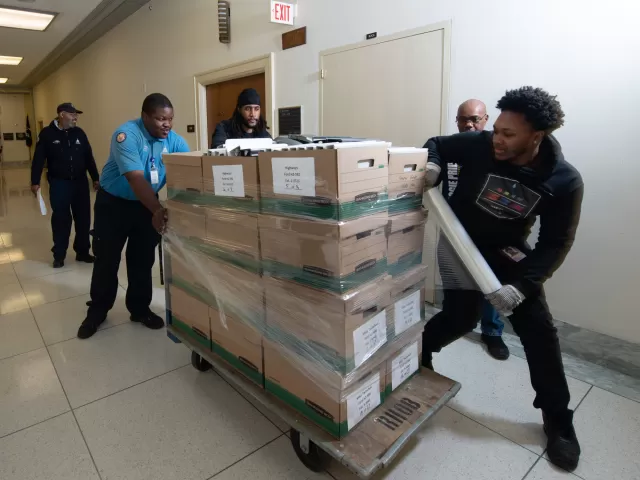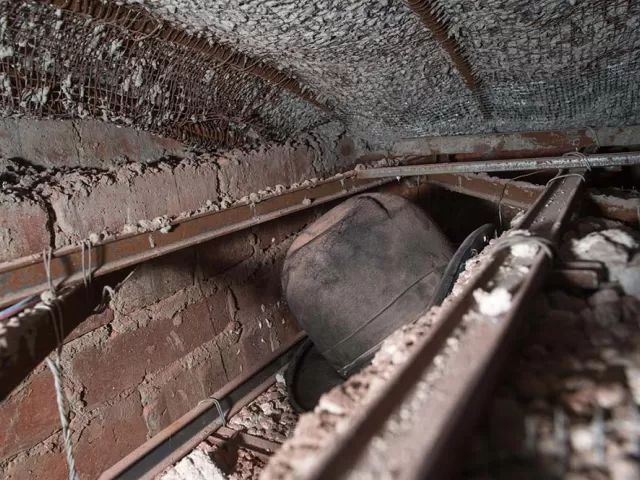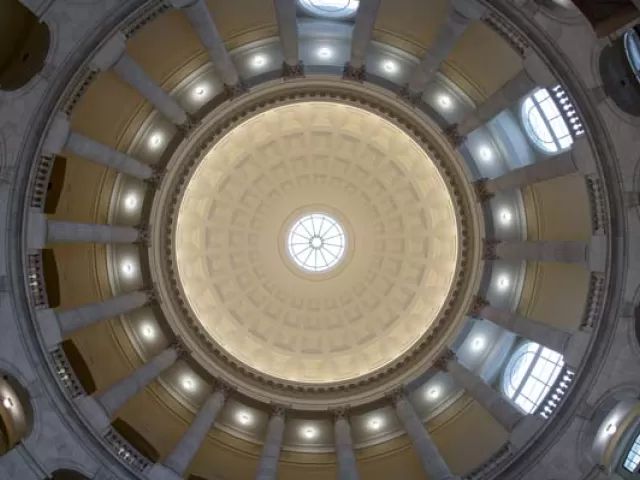Displaying 481 - 510 of 1017 Clear
Landing Page
The campus consists of the U.S. Capitol building and visitor center, principal congressional office buildings, Library of Congress buildings, Supreme Court buildings, U.S. Botanic Garden and 570 acres of grounds.
Landing Page
Today, there are more than 2,000 AOC employees serving around the clock to maintain and preserve the buildings and grounds.
Landing Page
Preserving the Historic Buildings that Inspire Our Nation What We Do
Project
The U.S. Capitol Visitor Center is redesigning Exhibition Hall. Visitors will encounter a dynamic and educational environment that will to inform, involve and inspire them about Congress' role in the democratic process.
Public Notice
Article
The Architect of the Capitol is delivering virtual Capitol experiences to those unable to visit because of the coronavirus (COVID-19). Resources for students and families learning from home are grouped into elementary, middle school and high school levels. There are also virtual field trips and
Projects
Article
Like most beloved national treasures from the Golden Gate Bridge to the Statue of Liberty, the U.S. Capitol Building roof requires continuous care.
Behind the Scenes
Article
It generates temperatures of 35,000 degrees Fahrenheit or more and accelerates to nearly the speed of sound.
Programs & Events
Article
The Architect of the Capitol selects the annual U.S. Capitol Christmas Tree in consultation with the United States Forest Service.
Projects
Article
The Architect of the Capitol's Construction Division with the support of the AOC Library Buildings and Grounds jurisdiction worked together to complete the Fire Door Improvements project.
Programs & Events
Article
This newly donated collection — the second largest single donation in U.S. Botanic Garden (USBG) history — adds to the rich heritage and importance of the USBG's orchid collection.
History & Discoveries
Article
Colonel Charles De Witt's career extended far beyond his home county, including being named as delegate to the Continental Congress.
History & Discoveries
Article
Beginning in 1855, Constantino Brumidi decorated many walls and ceilings in the U.S. Capitol, most prominently in the Capitol Rotunda and the corridors of the Senate wing.
Public Notice
Article
Eight bronze lamp posts were recently installed by the Architect of the Capitol on the marble pedestal of the Ulysses S. Grant Memorial in Washington, D.C. These posts are replicas of fixtures first designed and installed by Edward Pearce Casey, the architect for the memorial's pedestal.
Programs & Events
Article
The new U.S. Capitol Materials Cart Program showcases a variety of AOC trades, including masonry, sheet metal, paint and wood-crafting.
History & Discoveries
Article
Did you know that the 15,000-pound bronze Statue of Freedom, standing atop the 9 million pounds of cast iron of the U.S. Capitol Dome, dances every day?
History & Discoveries
Article
During a recent renovation, members of the Architect of the Capitol uncovered a long-forgotten painting of the famous horse, Black Jack.
Basic page
Is there a prison or jail in the U.S. Capitol? Several rooms in the United States Capitol have been used at various times for the detention of offenders. They were called guard rooms, and it is not always possible to determine whether those rooms were kept strictly for custody of prisoners or were
History & Discoveries
Article
Constantino Brumidi, born in Rome in 1805, was fully trained in classical and Renaissance painting techniques, including true fresco. He painted murals for Popes and princes and was considered one of the city's best artists. In 1852 he emigrated to the United States. In 1855, after painting a trial
Behind the Scenes
Article
After 12 years of service with the Virginia Army National Guard and two tours in Iraq, Anderson Alleyne began his career with the Architect of the Capitol (AOC) in 2013. He was hired as a night shift laborer in the Capitol Building jurisdiction and was responsible for maintaining the building's
Behind the Scenes
Article
There's a cool tool that enables the Architect of the Capitol (AOC) to quickly respond to requests to dig on the U.S. Capitol grounds. It has eight receiving antennas making it easier for the person operating the locator to get a signal from buried utility lines as deep as 15 feet.
Project
Aside from a modest addition at the rear of the building, the historic USBG Conservatory exterior remains unchanged from its 1933 appearance. It contains two courtyard gardens and 10 garden rooms under glass, totaling 28,944 square feet of growing space, and also has two exhibit galleries.
Project
Improvements include a new platform climbing structure, a new vine tunnel, a new digging area, expanded seating areas and additional shade structures. Spaces to dig, explore, plant, water and care for plants remain in the updated garden.
Projects
Article
The preservation of the Cannon House Office Building's historic windows and doors allows the building to retain much of its original character and charm, while increasing the building's functionality for those who work and visit within its walls. Learn more about the process.
History & Discoveries
Article
At a critical time in the U.S. Capitol's evolution, there was a Capitol Bronze Shop established by Montgomery Meigs. From 1855 to 1859, the shop helped serve the needs of the Capitol Extension, a major expansion project to accommodate a growing Congress in Washington, D.C.
Highlight
This pair of bronze vases, which artist Horatio Stone entitled "Ecce Homo" and "Freedom," have been variously referred to as "Philosophy" and "Invention," or more simply as the Federal Vases.
Behind the Scenes
Article
Every two years, the Senate Office Buildings jurisdiction takes on one of its biggest responsibilities, the Senate election-year office moves.
Behind the Scenes
Article
The Architect of the Capitol's (AOC) House Office Buildings jurisdiction is heavily involved in the corresponding work — this includes overseeing the lottery process for suite selections to moving all of the affected offices.
History & Discoveries
Article
During the process of renewing the Cannon House Office Building, workers have found hidden treasures that had been lost or discarded by the laborers who constructed the building more than 100 years ago. Here's a small sampling of what has been discovered since the start of the project.
Public Notice
Article
Phase 1 of the Cannon Renewal was recently completed and as members, staff and the public enter the Cannon House Office Building's historic rotunda, they will encounter something new — but it is actually something old. The rotunda has been returned to its original appearance when the building opened
